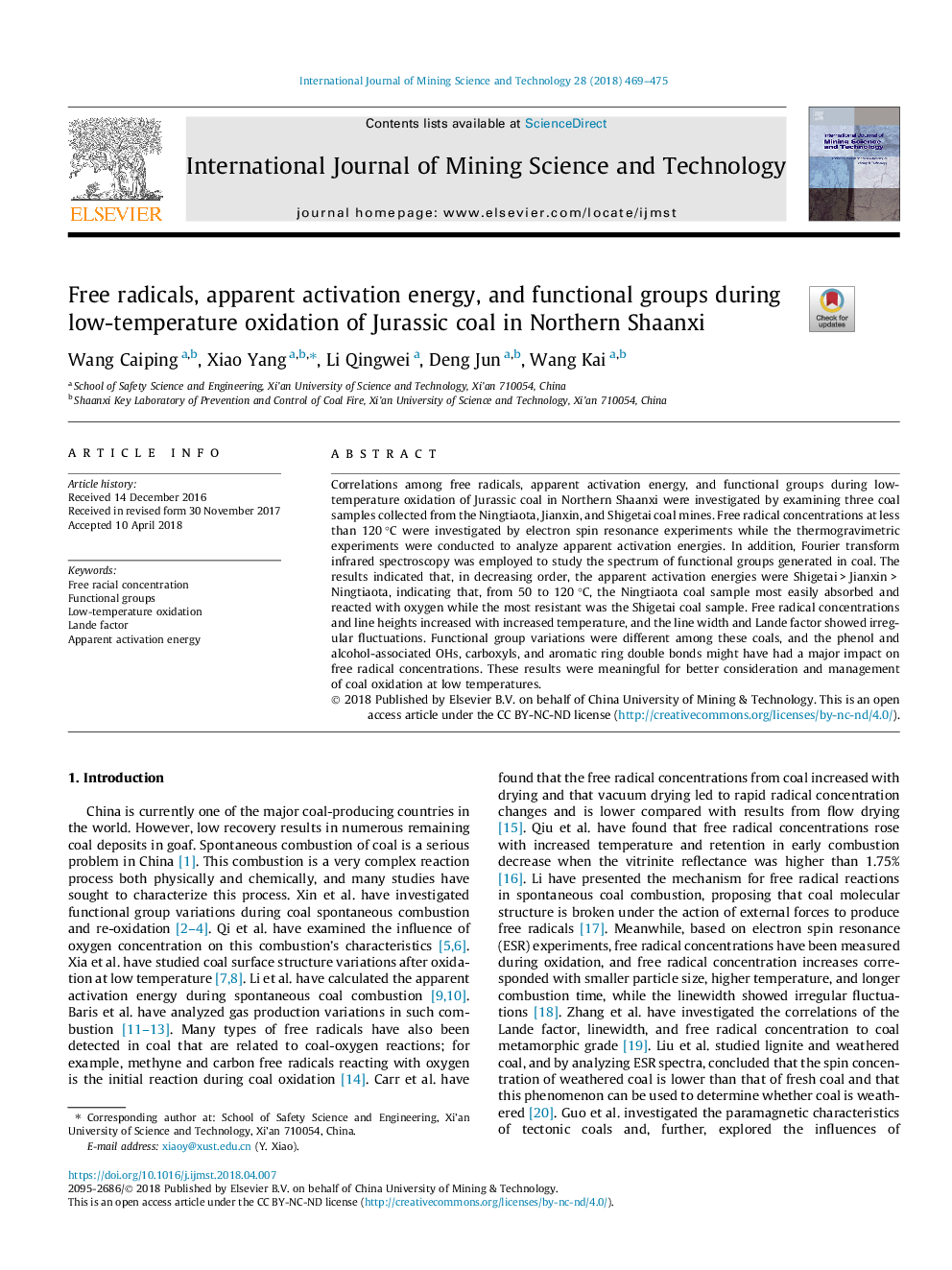| Article ID | Journal | Published Year | Pages | File Type |
|---|---|---|---|---|
| 6747757 | International Journal of Mining Science and Technology | 2018 | 7 Pages |
Abstract
Correlations among free radicals, apparent activation energy, and functional groups during low-temperature oxidation of Jurassic coal in Northern Shaanxi were investigated by examining three coal samples collected from the Ningtiaota, Jianxin, and Shigetai coal mines. Free radical concentrations at less than 120â¯Â°C were investigated by electron spin resonance experiments while the thermogravimetric experiments were conducted to analyze apparent activation energies. In addition, Fourier transform infrared spectroscopy was employed to study the spectrum of functional groups generated in coal. The results indicated that, in decreasing order, the apparent activation energies were Shigetaiâ¯>â¯Jianxinâ¯>â¯Ningtiaota, indicating that, from 50 to 120â¯Â°C, the Ningtiaota coal sample most easily absorbed and reacted with oxygen while the most resistant was the Shigetai coal sample. Free radical concentrations and line heights increased with increased temperature, and the line width and Lande factor showed irregular fluctuations. Functional group variations were different among these coals, and the phenol and alcohol-associated OHs, carboxyls, and aromatic ring double bonds might have had a major impact on free radical concentrations. These results were meaningful for better consideration and management of coal oxidation at low temperatures.
Related Topics
Physical Sciences and Engineering
Earth and Planetary Sciences
Economic Geology
Authors
Wang Caiping, Xiao Yang, Li Qingwei, Deng Jun, Wang Kai,
